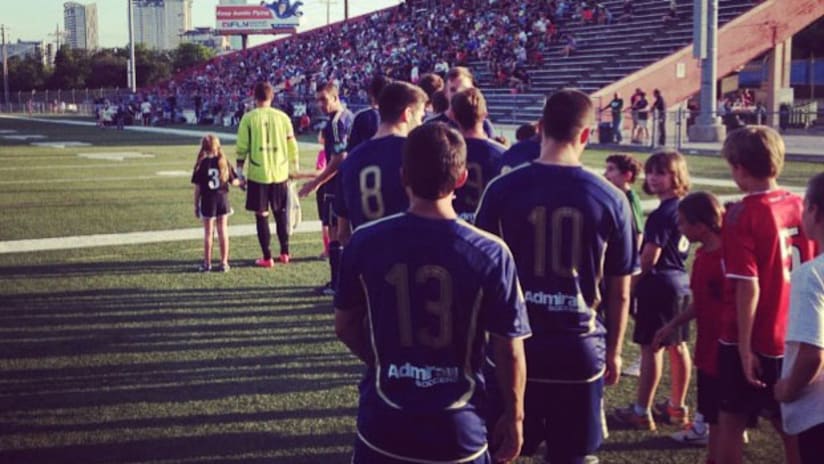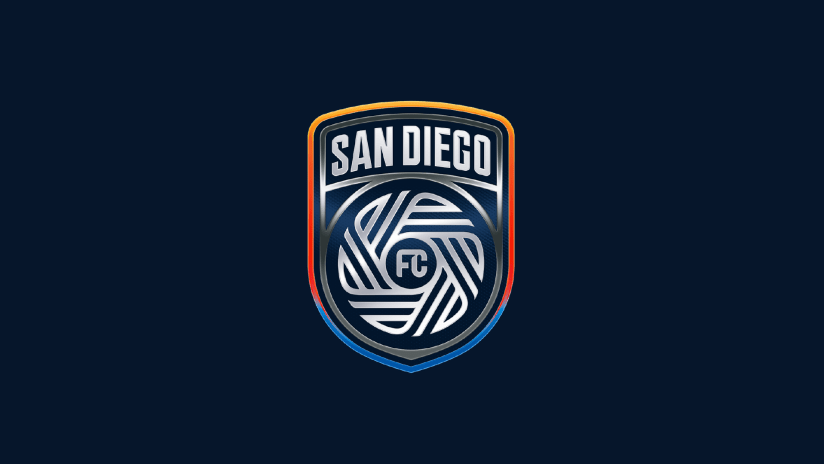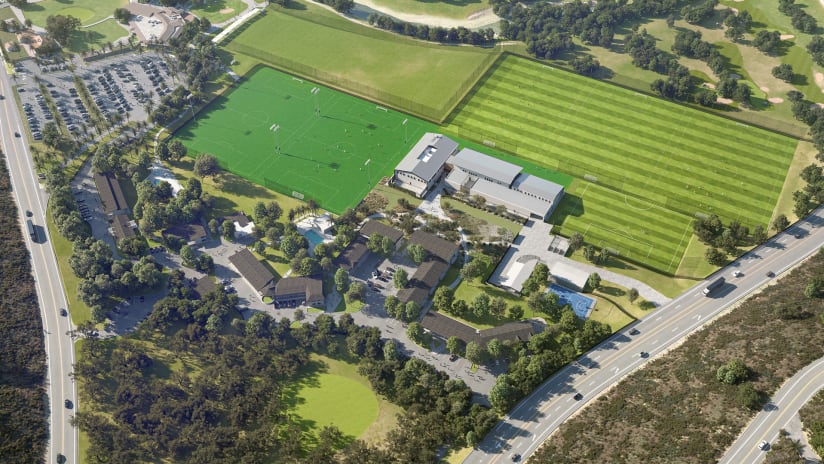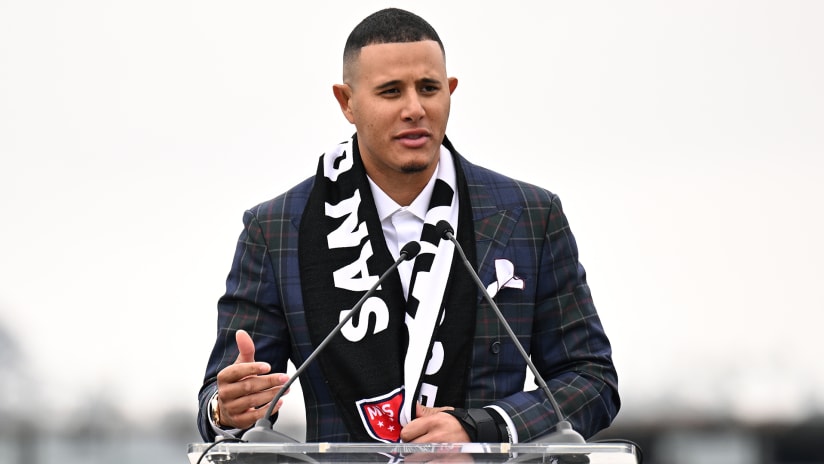When professional soccer left Austin, Texas, in 2010 for a brighter future in Orlando, fans in one of the fastest-growing markets in the United States suddenly had nowhere to watch the world’s game.
A group of local businessmen are trying to change all that, even if they understand it could be a long, tough road to bring someday bring Major League Soccer’s 24th expansion franchise to the heart of Texas football country.
“[In 2011], I would get on an airplane and talk to people who would say to me, ‘Oh, you like soccer? I’ve got a friend who plays for the Aztex,” says David Markley. “I realized the casual fan hadn’t realized that the team had moved.”
Founded in 2008 by English businessman Phil Rawlins, the Austin Aztex competed in the USL First Division – and then the temporary USSF Division 2 – for three seasons before they were relocated to Orlando for the 2011 season. Success has followed the club ever since – they’ll join Major League Soccer next season with Brazilian superstar Kaká already signed as their first Designated Player – and Rawlins said last month that part of the ownership group’s decision to abandon Austin as a potential MLS market was because the Texas city never quite lived up to their expectations as a soccer hotbed.
“We didn’t do a tremendous amount of market research first. Big mistake,” Rawlins told the Guardian in July. “As we were already in the market, we just thought soccer would take off there. We worked hard to establish the team for three years, but there were some strong fundamentals working against us… We knew we could build a really good club, but also knew we needed the market to make the jump to MLS and realize everyone’s ambitions for the club.”
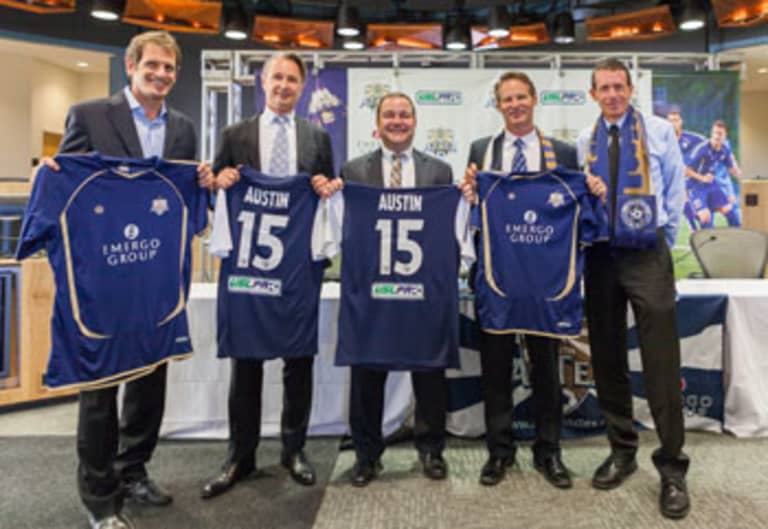
Austin Aztex owners (from left) Bobby Epstein, Rene Van De Zande, David Markley and Paul Thornton in June after USL president Tim Holt (far right) announced the team will join the league in 2015. (Austin Aztex)
Markley was part of Rawlins’ initial ownership group in Austin and says he amicably parted ways with the group when they moved to Florida. An executive for a local energy solutions firm, Markley has since partnered with three other like-minded soccer fans to help pick up the pieces and start a movement of their own, hoping they will one day land in MLS.
Markley and Rene van de Zande – the CEO of an Austin-based regulatory compliance consulting firm - successfully negotiated to retain the rights to the Aztex name in 2011, and the club was resurrected in the USL’s Premier Development League (PDL) a year later.
Next year the franchise will make the jump back to USL PRO, and the ownership group has also added local venture capitalist Bobby Epstein and well-known Austin event planner Paul Thornton to help dispel the idea that soccer cannot survive there.
“I don’t know all of [Rawlins’] motivations, but if one of them was that Austin is not a viable city, I would totally disagree with him,” van de Zende says. “I know for certain if he sets foot in Austin and gets a feel for where we are today with the club, I think he would be very pleased.”
“And maybe,” he adds with a laugh, “admit that it’s actually a very good city.”
It’s certainly growing, and in all the right areas.
US Census numbers released in March revealed that the Austin metro area is the fastest-growing market in the country based on domestic migration, with a 5.4-percent increase in population between 2010 and 2013. While more firmly entrenched urban centers like New York and Chicago each saw a decline of almost two percent of their population in that time, cities like Austin, San Antonio and Raleigh, North Carolina, were all on the rise, part of a growing flight to B-list metro areas with more than 1 million people.

Austin's demographics are encouraging to one day make it a soccer hotbed, thanks in part to Hispanics and millennials. The Aztex average roughly 2,200 fans per game, but have peaked with nearly 4,800. (Austin Aztex)
There are also encouraging demographics in Austin, thanks in part to a growing Hispanic population and thriving local companies drawing millennials in droves.
The Hispanic share of the metro’s population jumped from 26 percent in 2000 to 31 percent in 2010, and despite enormous growth in the total number of metro area residents since then, Hispanics are expected to increase their share to 35 percent in 2015.
Meanwhile, Nielsen dubbed Austin the top city in the country for millennials in a March survey, with 16 percent of the population ranging between the ages of 18-36 years old.
But what does it mean for the success of soccer? Even in a city that sheds many southern stereotypes, soccer is still largely a niche market in the area, and there’s not a wealth of history in the city to rally around. Teams came and went long before the Aztex – the long-defunct Austin Sockadillos/Lone Stars existed from 1987-2000 and were once coached by former Benfica regular Tony Simões – but there’s no men’s soccer program at the University of Texas, and the new-look Aztex are building largely from the bottom up.
They currently play at 6,000-seat House Park, a multi-use stadium originally built in the 1930s that houses the Aztex and the football and soccer teams from four local high schools. Although the location is ideal – it’s close to the city’s famous 6th Street entertainment hub, home to the annual South by Southwest music festival – the surface is FieldTurf, and the club is not allowed to sell alcohol inside the stadium.
The team averaged 2,209 spectators through the first nine PDL games this year, an increase from 30 percent over last year’s numbers. They peaked with 4,754 fans for a postseason match last month.
Van de Zande insists that the club is dedicated to building its own soccer-specific stadium sometime in the future, and that with the idea of Major League Soccer one day coming to town, Austin officials are currently conducting a feasibility study to see if and where a stadium might fit.
“Right now we’re really looking at downtown … not the suburb area,” he says. “There are a variety of opportunities where we could find an appropriate location that would absolutely meet our requirements and our wish to be within Austin proper.”
Markley, meanwhile, thinks there’s potential for something bigger among the fans even before the first brick is laid on a new stadium. During the World Cup last month, he took a quick lunch break at a local deli and found two men arguing over the offside rule while watching a game on the television.
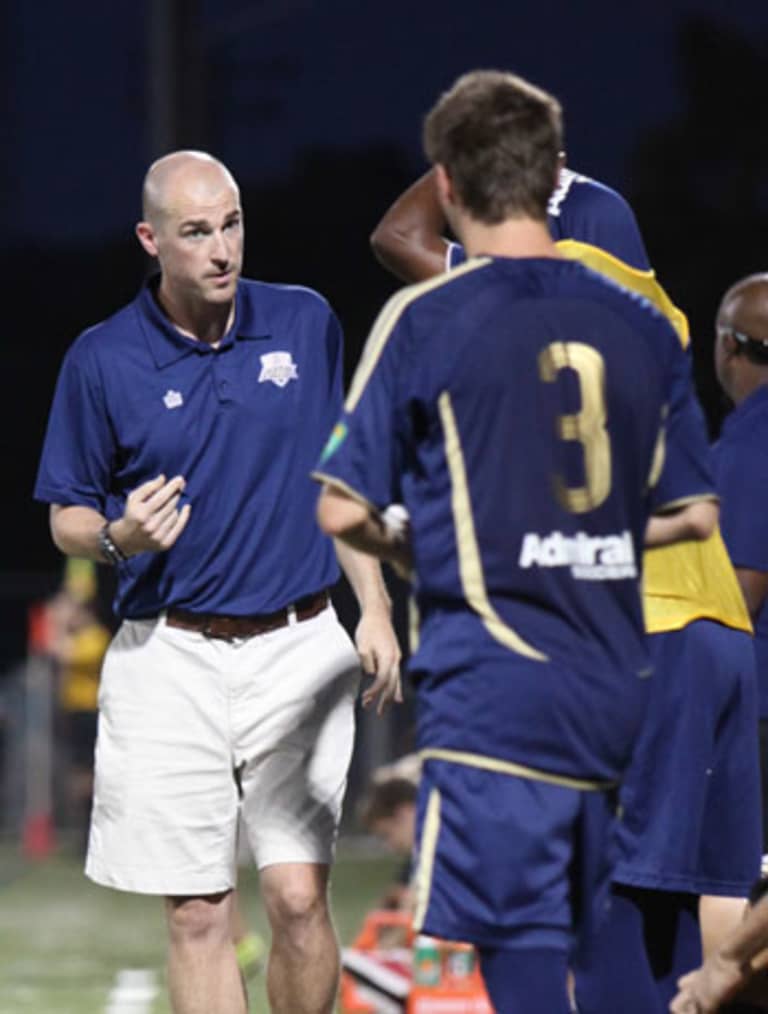
Paul Dalglish led the Aztex to the 2013 PDL title, and will return to lead the team during their first season in USL PRO in 2015. (Austin Aztex)
“They were dead wrong on how they explained it,” Markley says. “There was misinformation abounding. But they were enjoying the game. They were sitting there enjoying it and talking about it, and I did not correct them. I didn’t want to be that soccer snob who was telling them ‘No, that’s not right.’ They were having a good time.”
The message, to him, is clear: You can teach people the rules. You can’t teach them to enjoy the game.
“No one thing is going to make Americans love soccer,” he says. “There’s not a savior. It’s not Freddy Adu. It’s not David Beckham. It’s not Brandi Chastain taking her shirt off. It’s every little thing, you gain a few more fans.”
So it may have to be in Austin, too. The club announced earlier this month that Paul Dalglish – the former Houston Dynamo player and Real Salt Lake assistant who coached the Aztex to the 2013 PDL title – will lead the way once again for the team’s debut in 2015, and the team will hold open tryouts in October, trying to pluck a local hero from the place many thought pro soccer left behind.
The way the Aztex see it, now is the time for today’s Austinites - newly arrived or deeply rooted - to embrace the team that wouldn’t stay away for long.
“People asked me the first year [that we were back], ‘What’s your main goal?’” Markley says. “It’s really a matter of making sure people knew that we were going to be there to stay. They’d already been there and had a team leave, and I wanted to let the fans know that it wasn’t going to happen again.”

